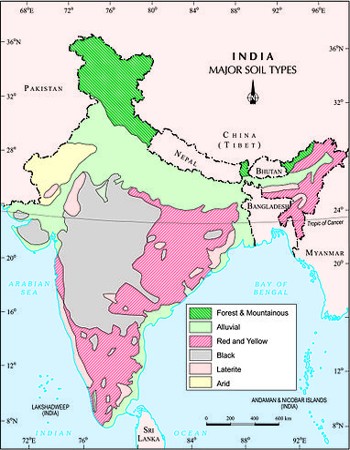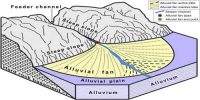Saline Soils in Indian Subcontinent
Soil salinity is the salt content in the soil; the process of increasing the salt content is known as salinization. They are also known as Usara soils. Saline soils contain a larger proportion of sodium, potassium, and magnesium, and thus, they are infertile and do not support any vegetative growth. They have more salts, largely because of the dry climate and poor drainage. They occur in arid and semi-arid regions, and in waterlogged and swampy areas. Their structure ranges from sandy to loamy. They lack nitrogen and calcium. Saline soils are more widespread in western Gujarat, deltas of the eastern coast and in Sunderban areas of West Bengal. In the Rann of Kuehehh, the Southwest Monsoon brings salt particles and deposits there as a crust. Seawater intrusions in the deltas promote the occurrence of saline soils.

In regions with the low water table, the salts percolate into the subsoil and in regions with good drainage, the salts are wasted away by flowing water. But in places where the drainage system is poor, the water with high salt concentration becomes stagnant and deposits all the salts in the topsoil once the water evaporates. In the areas of intensive cultivation with excessive use of irrigation, especially in areas of the green revolution, the fertile alluvial soils are becoming saline. Excessive irrigation with dry climatic conditions promotes capillary action, which results in the deposition of salt on the top layer of the soil. In such areas, especially in Punjab and Haryana, farmers are advised to add gypsum to solve the problem of salinity in the soil. Crops tolerant include cotton, alfalfa, cereals, grain sorghum, sugar beets, Bermuda grass, tall wheatgrass and Harding grass.















